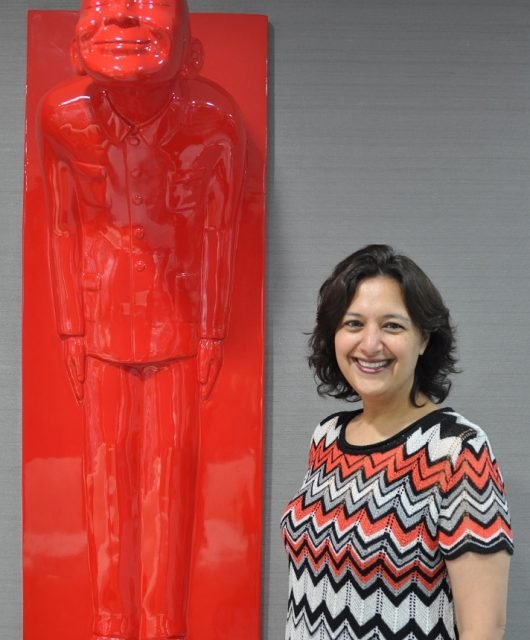Building Brands’ Reputations In The Digital Age: Q&A With Gambit Communications’ Jamal Al Mawed
Marketers of today are facing greater challenges to build brands in times when consumers tend to base their purchasing decisions primarily on brand reputation.
We’ve exclusively interviewed one of MENA’s communications mavericks Jamal Al Mawed, Founder and Managing Director of Gambit Communications, to shed some lights on how brands can build reputations in the digital age.
BB: Reputation is considered one of the brand’s most valuable assets. One of the core areas where brands and PR cross paths is reputation management. How can PR professionals help brands build a solid and credible reputation?
JAM: I think that the way you approach brand reputation evolves along with the brand. At the beginning of a brand’s lifecycle its reputation is tied very strongly to its visibility. The more familiar a brand becomes the more likely we are to trust it versus an unknown brand name, so in the early stages PR is focused on bringing the brand to the forefront and into the public eye using as many relevant platforms as possible.

As it evolves you need to approach your brand as a person to establish its character. What kind of people do we like and trust? People who are honest, principled, brave, kind, funny, helpful, etc. These are all attributes that can help make a brand successful, and PR is a great way to showcase those attributes. On a PR level, the brand’s honesty is about clear and truthful communication; kindness is about CSR and employee satisfaction; helpfulness is about new products and services; bravery is about taking risks and innovating, etc.
BB: Many brands are faced with crises that can give a hard blow to their reputations, effectively managing crisis when it arises can become a make it or break it to any brand. Can you give us some insights on what are the pillars of an effective crisis management strategy?
JAM: The most effective crisis management strategy is prevention, and I’m surprised how often that gets overlooked. Some of the biggest brand crises come from staff negligence, weak leadership, bad marketing decisions, recklessness on social media, lack of data security, ignorance of local laws or cultures, etc. These can be greatly reduced by identifying risk areas in the organization and actively addressing them through training, establishing better processes for decision-making, creating a social media guidelines manual for staff, etc.
The next most important thing is preparation. It is a lot easier to manage a crisis when you have well-trained spokespeople who are already visible to the media, a press office that functions effectively to distribute information, a unified leadership team that can take decisions quickly, competent agencies, pre-prepared holding statements, effective social listening tools and efficient media monitoring.
Finally, it’s about promptness. When dealing with a crisis you need to respond in real time and for that you need a team that is ready for action on short notice, and that can establish the facts quickly and communicate them honestly.
BB: The digital transformation age has given reputation and crisis management a whole new dimension. Reputations can be affected negatively with one single social media post. In a nutshell, what are the dos and don’ts when handling virally blasted crisis?
JAM: We are in the age of the Twitter mob and that can be very frightening for brands, so it is important to remember five steps when you have a viral crisis:
- Say something! Don’t remain silent for too long, as it only serves to agitate your public. Even a simple statement acknowledging that you are aware of the situation and investigating it is important.
- Don’t be defensive. If something has gone wrong in your organization then you need to take responsibility for it as a first step towards putting people at ease. Consumers gets even more worried/agitated when they feel the brand is trying to evade blame. The United Airlines crisis last year was a good example of this as it took them three or four days to finally take ownership and by then the damage was done.
- Establish the facts quickly and communicate them honestly where relevant. People want information not excuses and they will respect you more for being direct.
- Stop other planned posts until you have addressed the issue. You don’t want your regular posts to become a magnet for social media conjecture and abuse.
- Apologize and move on. Social media has a short memory so unless it would insensitive to move on too quickly (for example if there was a death involved), the best thing is to apologize and get back to what you do best. The Pepsi/Kendall Jenner crisis last year was a great example of this as they wasted no time in apologizing and continuing their campaigns, and it was quickly forgotten.
BB: Brands work in different cultural contexts. Do cultural differences affect crisis management?
JAM: Absolutely – brands need to respect the cultures of the countries they are operating in and be aware of the differences in values, beliefs and leadership systems. For example, if a brand is facing a crisis in our region related to a revealing outfit, rather than be defensive it should be ready to acknowledge that it was inappropriate in a more conservative culture. Also, they should include transaltions in the local language where possible to avoid bad interpretations of what is likely a sensitive message.
BB: In your opinion, what would be a perfect example of a brand that faced a crisis and was able to turn it into a PR win in the Middle East?
JAM: I think the ‘Dubai’ brand is the best example because it proves the power of positive news to combat negative assumptions. Anytime Dubai has faced bad press in the global media such as the New Year’s Eve fire or the property slump, it has come back stronger with even more exciting news from tourism, transport, aviation, luxury, hospitality, etc and that relentless drive to improve and innovate leaves a good impression internationally.





